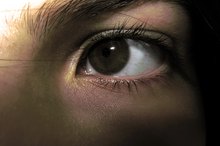How Long Does It Take for a Person to Feel the Effects of Black Mold?
Black mold causes many health problems. It is often difficult to tell exactly what the time frame is for a person to feel the effects of exposure to black mold. Some symptoms and maladies show up immediately, others take several days, and others can actually take years of exposure to cause a definitive health issue.
Immediate Reactions
An itchy nose and throat are indicators that you have breathed in some black mold spores. These symptoms are usually followed closely by a headache, itchy eyes, and coughing and expelling mucus.
Skin Reactions
Black Mold Poisoning Symptoms
Learn More
Some people develop a rash or hives along with itching and burning of the skin after being exposed to black mold. This skin reaction can happen anywhere between a few minutes and 24 hours after exposure.
Lingering Effects
Headaches, coughing and other immediate symptoms can linger for several days, depending on the length of exposure and how many spores were inhaled. So while there is an immediate effect, you can also feel these effects for days or weeks after the exposure.
Severe Headache and Nausea
Symptoms of Mold Growing in the Body
Learn More
Blinding headaches similar to a migraine and nausea are common symptoms of a black mold allergy. Such symptoms can occur immediately, or after being exposed for a few hours. This is one way that many families find out that their homes have a black mold problem.
More Serious Effects
Lung and respiratory problems develop over time after exposure to black mold and, of course, worsen with repeated or continual exposure. Many side effects of continuous exposure to black mold lead to more serious problems, including eye and vision damage, lethargy and listlessness, and lack of appetite. In severe cases, black mold is thought to be associated with the onset of cancer.
Related Articles
References
- Amirhosein Ghaffarianhoseini, Husam AlWaer, Hossein Omrany, Ali Ghaffarianhoseini, Chaham Alalouch, Derek Clements-Croome & John Tookey (2018) Sick building syndrome: are we doing enough?. Architectural Science Review,61:3, 99-121.
- American College of Allergy, Asthma & Immunology. Mold Allergy. Reviewed April 23, 2018.
- Centers for Disease Control and Prevention. Fungal Diseases. Reviewed May 6, 2019.
- Centers for Disease Control and Prevention. Mold. Basic Facts. Reviewed December 20, 2017
- Asthma and Allergy Foundation of America. Mold Allergy. Reviewed October 2015.
- Centers for Disease Control and Prevention. Molds in the Environment. Rreviewed December 20, 2017.
- Asthma and Allergy Foundation of America, Mold Allergy
- Centers for Disease Control and Prevention (CDC), Mold, Basic Facts
- Rudert A, Portnoy J.Mold allergy: is it real and what do we do about it?Expert Rev Clin Immunol. 2017 Aug;13(8):823-835. doi: 10.1080/1744666X.2017.1324298. Epub 2017 May 17.
Writer Bio
Suzanne Alicie is a professional writer and author who has been writing professionally since 2008. She has experience in gardening, communications and retail, as well as being a small-business owner. Alicie is an avid gardener and is happiest when digging in the dirt or grooming her flowerbeds.








